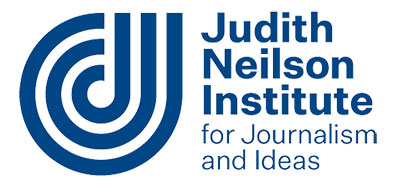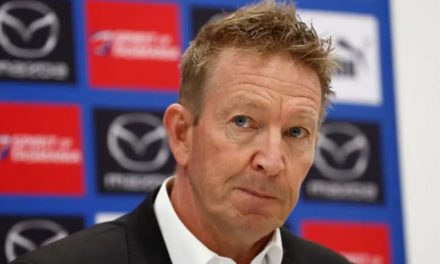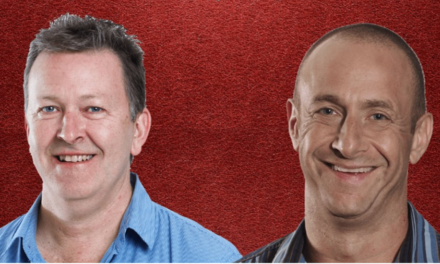Geoff Morris, one of the good football people disenfranchised by the financial implications of the pandemic for the game.
October has become November on the Australian football calendar in this peculiar 2020. And this end-of-season moment is more painful than any year before.
“It is (the month) when we take a young man’s dream away,” says Brisbane football boss David Noble of the delistings that have been made – and those on hold depending on list sizes and the uncertain salary cap – across all 18 AFL clubs.
“They might have seen it coming … but until there is that finality, it is very difficult – and very emotional.”
But not as difficult and as emotional as what has been unfolding in AFL football departments and with front-office staff since the COVID lockdown in April-May, and most recently with the cutbacks while Australian football confronts far more than just tightening its belt amid the $100 million loss in season 2020.
“Up to this year, I thought (delisting players) was the most difficult (task in football),” adds Noble. “But taking charge of a group and standing down people … that is harrowing.”
Every AFL club will slash $3.5 million from its football department spending next year – and staff numbers will be hit across every section of the national league, where the front office once had as many as 150 full-time employees.
Some will argue it is the correction the game – with a “bloated” AFL at the top of the pyramid – has needed for some time, perhaps a long time. It has been more than two decades since the weekend pastime became a professional sport, or as some would have it, an “industry”.
The hierarchy chart that revealed the grand empire at AFL House created no public sympathy for staff cuts at league headquarters in Melbourne.
The “leaked” emails that detailed the salaries of WA Football League and WAFL club staff in Perth was no less inviting of questions on how much fat had been put on Australian football’s sacred calf. Certainly, the WA State parliament has had much to ask of the use of public money in WA football.
At Port Adelaide, now-retired chief executive Keith Thomas – who in 2011 took over an AFL club on its knees for all the deep cuts repeatedly made to the football and administrative budgets at Alberton – warns Australian football will lose many good people in the fall-out from the COVID pandemic.
“We have survived,” says Thomas of a game that was facing a $965 million black hole when the 12-week lockdown began after the season-opening round in March.
“The game of Australian football stood up … and it also has suffered. We have lost many good people from the game. There is a price you pay for that – and we are still to see it. You can’t reduce staff numbers by 20-40 per cent and maintain what we had built before the pandemic.”
This point was reinforced by Brisbane coach Chris Fagan when his team made its exit from the preliminary finals, and his club had to pick up the brutal cost-cutting agenda to prepare for a new season that demands working to a leaner model throughout the Queensland-based AFL club, not just the football department.
And this is while Brisbane and Gold Coast were to have been taking advantage of the focus Australian football had in the rugby heartland of Queensland that became “AFL Central” this year.
“A lot of people have lost jobs in the industry this year,” Fagan noted. “Really good people. Hopefully, in some way or another they can find their way back in.”
The financial hit across the league can be counted to the cent – to as much as $100 million. As many as 13 of the 18 AFL clubs will carry a financial umbilical cord to AFL House for years. The human cost, however, never will be known.
“What I know,” adds Fagan, “is all the people who work at footy clubs are so passionate about the game. They’re so passionate about the players and helping them get better. It’s just sad to see so many of my colleagues not in work anymore.”
No story – not event – in life, let alone Australian football, is ever completely told until there is a face or name attached to its tale.
PLEASE HELP US CONTINUE TO THRIVE BY BECOMING AN OFFICIAL FOOTYOLOGY PATRON. JUST CLICK THIS LINK.
This one is told best with the likes of long-time servant Geoff Morris, a former league player in the SANFL, coach in both the AFL and SANFL and recruiting officer in the AFL system.
In late November last year, Morris returned to Port Adelaide, where he had played a pivotal part in developing the young talent that matured into the breakthrough 2004 AFL premiership squad, to work on the training track.
He was, quite frankly, Port Adelaide’s “recruit of the year”. His signing was a brilliant strategic play for senior coach Ken Hinkley’s long-term agenda to build with youth a repetitively successful squad at Alberton.
As Fagan says, here is the face – the human side – of those passionate football staffers wanting to make young players better. Men and women who also make the game better for their imparting of hard-earned wisdom.
Morris had spent the previous 14 years with Hawthorn, recruiting and developing the players who carried senior coach Alastair Clarkson’s orders during the “three-peat” premiership dynasty of 2013-15.
After being worn out by the constant long-haul travel while managing Hawthorn’s recruiting needs along every road west of his birthplace at Mount Gambier on the South Australia-Victoria border, Morris appeared in his rightful place on the training track at Alberton Oval during the summer.
West Australian draftee Mitch Georgiades was going to learn plenty from Morris. As would second-year fan favourite Zak Butters. And 2019 Rising Star nominee Connor Rozee, who plays the same roles Morris knew while mixing midfield and forward roles in the SANFL in the 1970s and ’80s.
Port Adelaide – while it intends to build the AFL’s best under-22 squad – could not have been more enthusiastic about regaining the 1979 All-Australian, who had carved out a Hall of Fame career as a premiership hero at SANFL club West Adelaide (220 league games, 1973-1986 as a wingman or half-forward).
“It’s fantastic to have someone of Geoff’s calibre back at Port Adelaide,” Port Adelaide football boss Chris Davies said in November last year. It certainly was.
A year later, Davies has had to make the harshest cuts in his football department. He acknowledges this includes “a high-quality individual, and we were lucky to have Geoff Morris back, even for that short period of time pre-COVID.”
Morris was first stood down in April during the 12-week lockdown; he was not recalled in June when the Port Adelaide squad was put into its biosphere hub under COVID protocols; and finally he was denied a return to the preparations for next season by the cuts in football department spending.
For the bulk of 2020, Morris had to endure the uncertainty the pandemic has left everywhere, not just in football. If Port Adelaide was allowed to spend freely, there would be no debate on keeping Morris – and no difficulty in finding a third-party backer for the budget. What’s the problem with yet another corporate logo on a coach’s tracksuit?
But AFL clubs must cut $3.5 million from football department spending to work to a $6.7 million cap in 2021. The AFL will strictly monitor spending, particularly at the 11 league clubs assisted by AFL funding such as Port Adelaide.
And at Port Adelaide, there is a further $25,000 hit to the slashed soft cap for the COVID protocol breaches by novice ruckman Peter Ladhams and defender-midfielder Dan Houston for their after-game party at home in early August.
Adelaide premiership ruckman David Pittman worked with Morris as part of the coaching panel at Port Adelaide while Mark Williams built his successful team at the start of the century.
“Sensible, genuine,” says Pittman when asked to reflect on Morris’s contribution to a football team. “In the coaching box, Geoff brings a level of calmness in an often heated situation.
“On the training track, Geoff’s development work with players was obviously exceptional with the Port Adelaide 2004 squad. At Alberton, he had the greatest respect of his peers in the coaching group and of the playing group.
“Geoff’s greatest attribute is his very clear thinking in the heat of battle … and imagine how important that is in some coaching environments.”
There will be a Geoff Morris – there will be many of his calibre – at every AFL club.
This is the human tragedy of COVID on Australian football in 2020 and beyond. Thomas’ point is the game not only shrinks with smaller budgets in the next year – it also is poorer for having to lose quality men and women who gave the Australian game the strength to survive a pandemic.
Thomas saw how cutting investment in football at Port Adelaide created an under-resourced program – a “basket case” – around novice coach Matthew Primus in 2010-2012.
There will be many draftees called to Port Adelaide in the next five years who will make it to the big time – their talent practically ensures as much. But their passage would be made with greater surety under the guidance of a master development coach such as Morris.
At Hawthorn and Port Adelaide, Morris is an unsung hero. He was across the past two decades a man who drew no attention to himself while drawing the best out of prospective AFL players.
So the AFL needs to be aware of those being left behind while the cuts deepen and the agenda turns from survival to consolidation while seeking to clear away this $100 million of new debt from the books. Good people cannot be left on the side of the road while the AFL ditches assets to stay afloat.
The final count in human resources will be, to borrow Noble’s theme, quite “harrowing”.
Australian football can do with fewer data analysts behind computers in the match-day coaching box. It would be better without leaning on external consultants for pre-season camps, as the Adelaide Football Club learned at great cost after losing the 2017 AFL grand final to Richmond.
It certainly needed a correction to the “arms race” that had clubs spending more and more – and straying into new business fields to generate the cash – on their football programs. It certainly can save the million dollars on the roll out of any new AFL logo.
But the game is not better off without the likes of Geoff Morris. This is the unspoken cost of COVID on Australian football.












